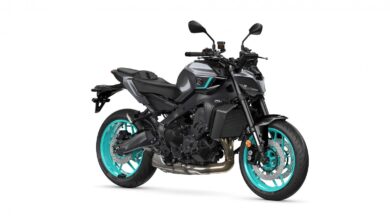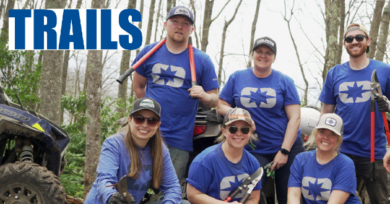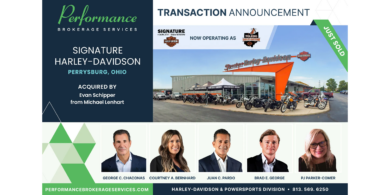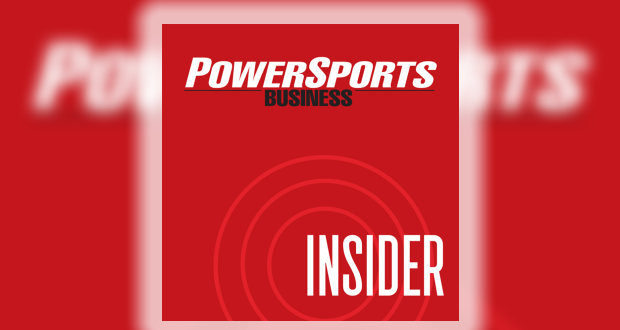Oct. 5, 2009 – A key issue: How to sell the sold
By Jeff Hemmel
Contributing writer
Listen in on the conversations of PWC industry executives, whether at the OEM or dealer level, and one recurring comment is heard time and time again. The subject? Not just how does the industry attract new enthusiasts into the market, but also how the industry convinces those who already own aging PWC to upgrade.
Those in the know realize it’s often a tougher task than it may seem.
Breed The Enthusiast
“The people that get on their 1990 WaveRunner or Sea-Doo can have almost the same level of fun as they can on a new boat,” Yamaha’s Scott Watkins candidly suggests. “The comfort and performance, of course, are very different. You and I get on one and we go, ‘I’ll never ride one of those again in my life.’ But there are still a lot of people out there that ride them and, at the end of the day, still have a huge smile on their face. How do we let them know they’ll have an even bigger smile on their face with the new stuff?”
It’s a tough question, and no one seems to have a definitive answer. One suggestion, however, is the industry as a whole needs to do a better job of developing true watercraft enthusiasts, rather than casual riders.
“I have always believed that the key to building and strengthening the enthusiast base is to build and strengthen the community,” says WaterTop Unlimited’s Tim McKercher. “I would guess over half the PWC owners are ‘fair-weather’ owners or ‘add to toy collection’ owners. Meaning they will buy and ride when it is hot and perfect out, and buy to add to their collection of toys, but it is just another toy. It’s not the toy or only toy, as a motorcycle or snowmobile might be.”
McKercher goes on to say that the sport of PWC is, in fact, anything but personal. He notes few people actually ride alone, but instead look to ride with friends or family. That makes group events seem like a natural fit. “It comes down to owner events and clubs,” he continued. “There have been attempts here and there, but events are a lot of work. Sometimes there is no immediate payback or measurable return on investment for sponsors. But this is a long-term and industry-building strategy. If the OEMs looked at the long term, they would back more events and partner on grass-roots events.”
Get Out And Ride
The best answer to the question, however, is also the simplest at face value. Dealers and OEMs need to get the owners of aging models on the latest and greatest equipment so they can see exactly what they’re missing.
“When we used to ride 30hp watercraft 20 years ago, we had a blast on them,” says Steve Littlefield, owner of Central Texas Powersports. “But that’s all they made. Now, they make 200hp models with cruise control and much smoother rides. It’s difficult for that customer who has an older boat to realize unless they have a test drive.”
Says McKercher: “We have to let people know they are driving old cars with no seat belts, air bags, windshield, anti-lock brakes, etc., when they could have a modern vehicle with all the coolest stuff.”
Obviously the test drive is a good solution, but that assumes the customer is already in the showroom. To entice a far greater number of potential customers, Littlefield suggests the tried-and-true Demo Days concept. To prove its worth, he points to a recent BRP demo tour of the Spyder three-wheel roadster. According to Littlefield, the OEM brought in 8-10 demo models on a tractor-trailer, and worked with dealers to help advertise the event and bring out customers. In his case, this one-day event resulted in five sales. Notes Littlefield: “I don’t think a customer of an aging model could help but get excited if they rode one of these new watercraft.”
For the manufacturer, however, such an effort is a big undertaking.
“The last time we conducted such a tour was in 2003, when we had about a 10-stop tour with a dedicated truck,” said Kawasaki’s Russ Brenan. “It was a very involved effort that required quite a bit of work and planning to put on.”
Kawasaki is currently doing demos of the Teryx RUV, but at larger consumer events, like Daytona and Sand Fest, rather than individual dealers.
Share The Love
“Bottom line, the industry and sport is fragile and needs to be held,” said McKercher. “OEMs, dealers, aftermarket, they all need to continue promoting their products and services via magazines and the Web, but put more effort in backing that stuff up with going to the beaches, lakes and launch ramps and put people on new machines. Make an event out of it that people can attach themselves to, make them feel a part of, and something they want to do again, every weekend. They should be dying for the weekend all week, to go ride.
“When people ask them what they do, they should be proud to say ‘I ride watercraft.’”




